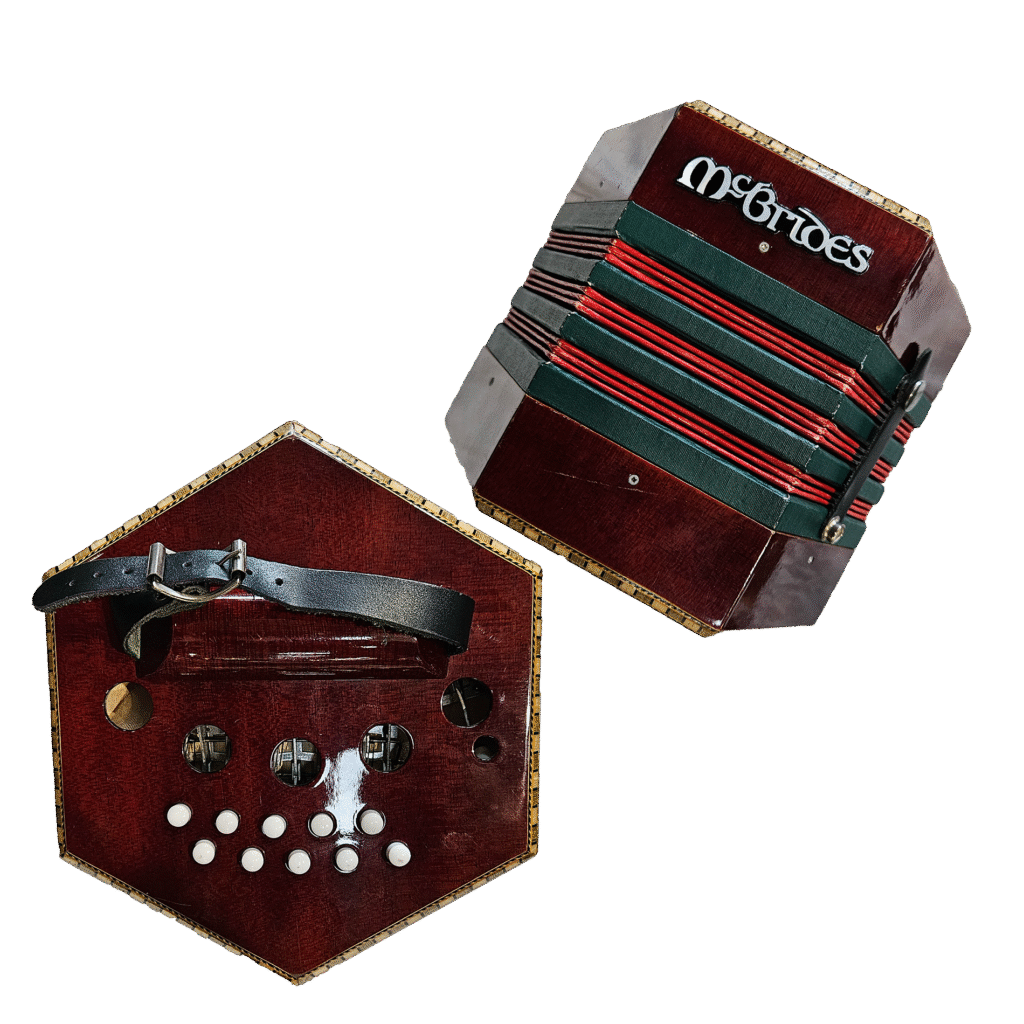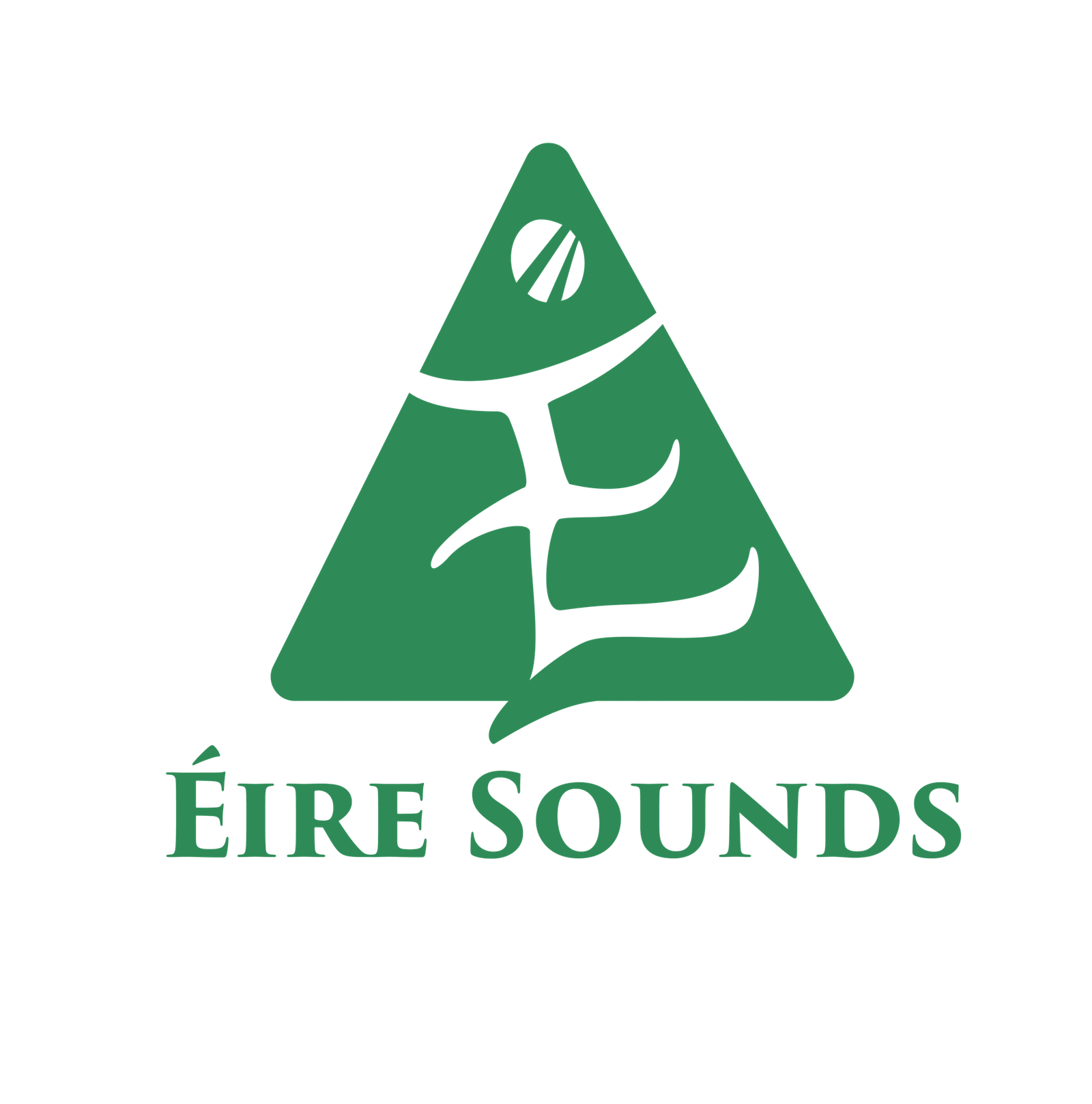- Description & Sound: Both are bellows‑driven squeezeboxes. The concertina is hexagonal with buttons on both ends; the button accordion (or melodeon) has rows of buttons and a punchy sound (Wikipedia, The Irish Road Trip).
- How they’re played: Bellows open/close with one hand; buttons controlled by fingers produce notes—often diatonic tuning.
- Usage: Provide both melody and rhythmic drive; popular in céilí bands and duo settings.
- Notable Musicians: Early 20th‑century concertina players include Nell Galvin (also a fiddler) from County Clare (Wikipedia); Michael Tubridy (also flute/whistle) on concertina (McNeela Music).
Historical Context
- Concertina:
- Introduced to Ireland in the mid-19th century from England.
- Quickly adopted by rural players for its portability and melodic possibilities.
- Most common in West Clare and Sliabh Luachra regions.
- Button Accordion:
- Arrived slightly later, early 20th century.
- Used widely in céilí bands due to its loudness and rhythmic clarity.
Role: Both became vital in group dance music, especially in public performances from the 1930s onward.

